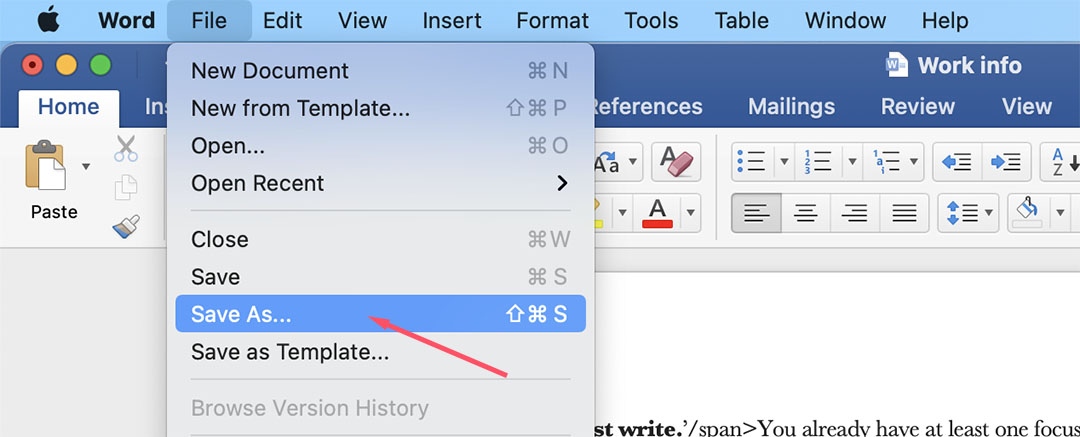
- How to turn on autosave in word hp how to#
- How to turn on autosave in word hp drivers#
- How to turn on autosave in word hp update#
- How to turn on autosave in word hp driver#
- How to turn on autosave in word hp windows 10#
How to turn on autosave in word hp drivers#
Use a program that automatically finds, downloads, and installs the drivers your laptop requires.
How to turn on autosave in word hp driver#
You can always search for a fresh driver on the HP website or by going to the manufacturer’s website for your wireless adapter. Be patient while it searches because it takes a long time.
How to turn on autosave in word hp update#
Solution 2: Update the Wireless Adapter Driver Restart your computer and check your Wi-Fi connection.Restart your laptop after it has been installed.The wireless network adapter driver will be reinstalled by the HP laptop.To make hardware modifications, navigate the bar and click the “Scan” symbol.When the window displays, confirm it by pressing the “Uninstall” button.Select “Unstill device” from the right-click menu on the wireless network adapter.Select the “Network adapters” option and expand it.Then select “Device Manager” from the drop-down menu. Hold down the “Windows” and “X” buttons at the same time.Here are some options for you to consider: Solution 1: Uninstall and Reinstall the Wireless Adapter Driver

However, if one doesn’t work, you may quickly switch to another.

There are primarily four solutions to this issue. What is the Procedure for Turning on Wi-Fi on an HP Laptop?
How to turn on autosave in word hp how to#
So you want to know how to turn on Wi-Fi on an HP laptop? Then let us walk you through the process with our step-by-step solution. We’ve got you covered because we know how to solve this issue.
How to turn on autosave in word hp windows 10#
So, if you’re using Windows 10 on an HP laptop and are experiencing the same issue, don’t panic. I tried to find those same registry entries in Office 365 Home and came up empty.Many HP laptops have been discovered to have a slow Wi-Fi connection or to turn off frequently. Unfortunately, the hack works only in Office 365 ProPlus. That's according to a Microsoft support article. If you're equally miffed, there's one more option: You can disable AutoSave by tweaking the Windows registry. Plenty of web and mobile apps present users with informative overlays when introducing them to new features. I wouldn't be so miffed about this if Microsoft had notified me first. What if I make changes and then decide to abandon them? Now I've got an unnecessary, unwanted copy I have to manually delete. Microsoft recommends that when you open an existing document with the intention of saving it with a different filename, you use the new "Save a Copy" option (which is what replaced "Save As") before you make any changes. There's another way to work around this, but it means changing the way you work, and probably have worked for decades.

Sure, you can turn off AutoSave - but only if you turn off automatic backups as well. If you're willing to do that, click File > Options > Save, then clear the checkbox next to "Save AutoRecover information every X minutes." That effectively disables AutoSave - while also leaving you without the aforementioned backup. What you can do is turn off AutoRecover, the feature that automatically creates a backup at regular intervals. There's no way to globally disable AutoSave. It gets worse: Although you can easily turn off the new AutoSave feature by clicking the little toggle in the upper-left corner of the screen, that turns it off only for the current document. To me it seems borderline insane that Microsoft would change a fundamental method of saving Office documents without adequately informing users. This is especially frustrating because the update was pushed out without warning, explanation or instruction. What's more, when working on a document that's already been saved at least once, you'll notice that the "Save As" option - as old as the software itself - has disappeared from the File menu. Because of an incomprehensible change pushed out not long ago, any changes you make are automatically saved - meaning your original document is overwritten, even if you don't want it to be. Just one problem: Microsoft's Office 365 no longer works that way. That leaves the original alone, but gives you a modified copy. Here's a common practice: You open an existing document in Microsoft Word, Excel or PowerPoint, make some changes to it, then save it using a different filename.


 0 kommentar(er)
0 kommentar(er)
